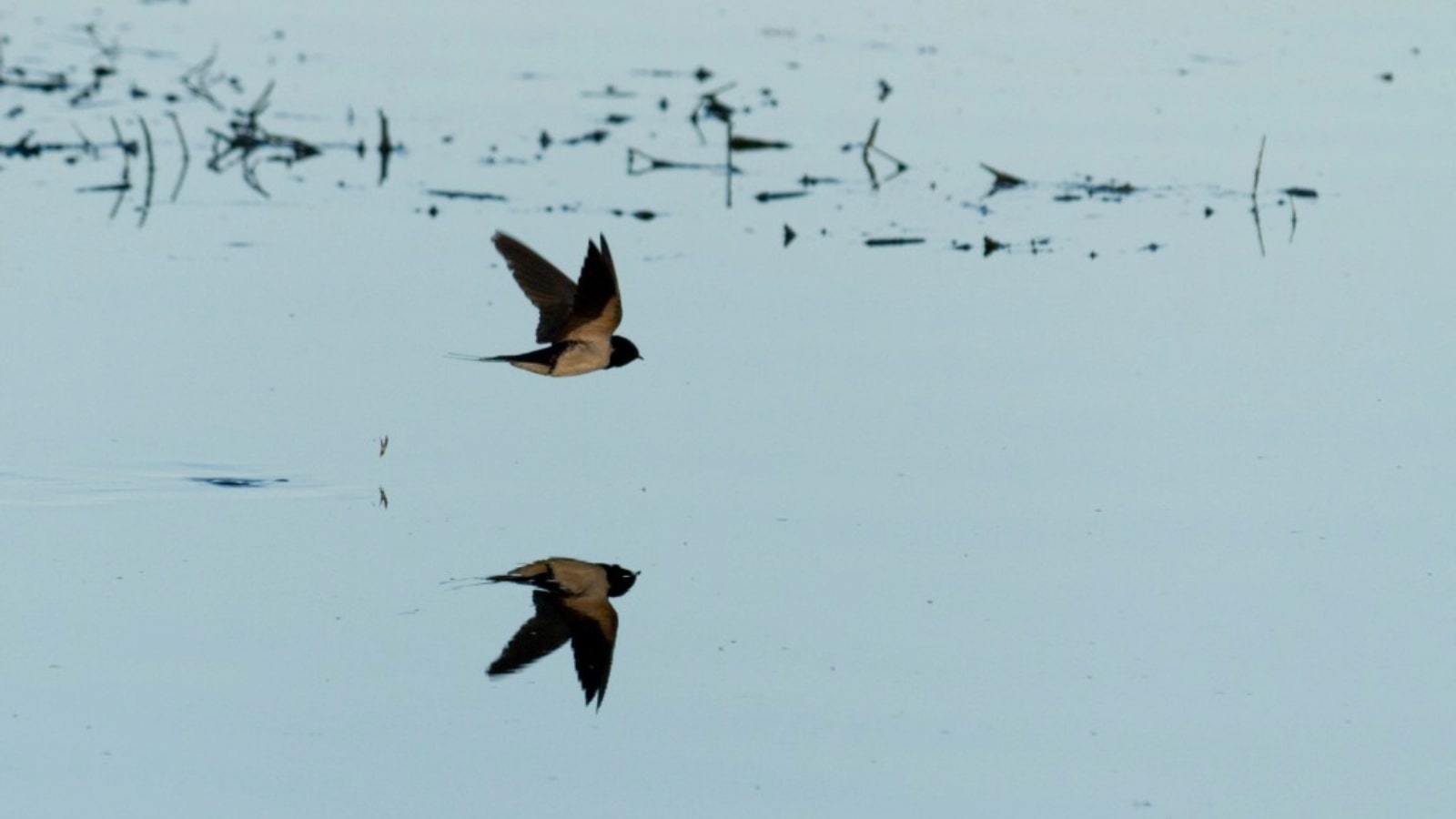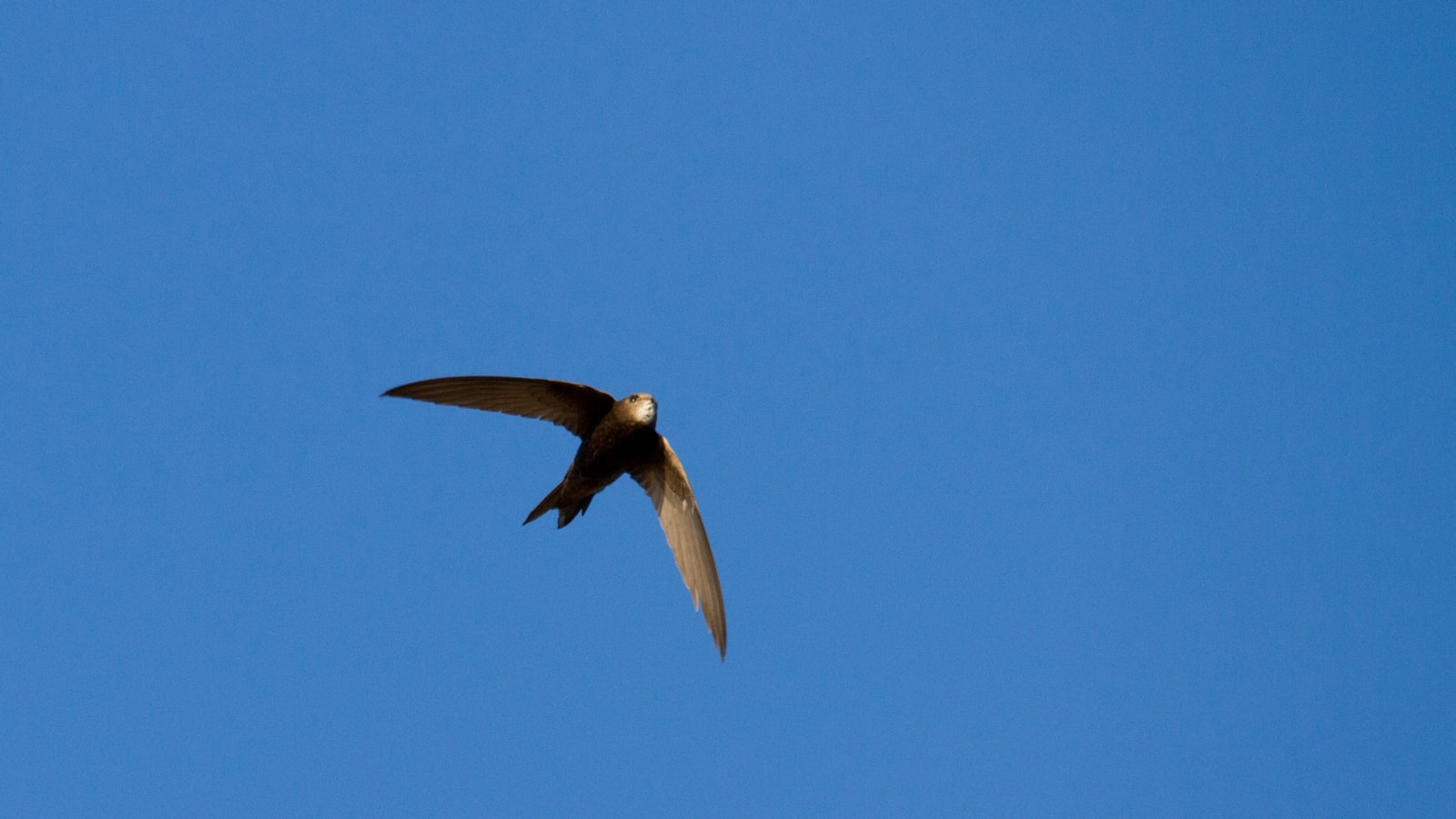An essential guide to swallows and swifts
How many species of swallows and swifts are there in the world?
There are 114 known species of swifts, birds of the Apodiformes order, to which hummingbirds also belong. As for swallows, slightly fewer species have been described, 93. Incredibly, they belong to a different order to swifts: they are part of the Passeriformes order, just like blackbirds and tits.
And in Portugal?
There are five species of swallows in mainland Portugal: the Barn swallow (Hirundo rustica), the Red-rumped swallow (Cecropis daurica), the Western house martin (Delichon urbicum), the Sand martin (Riparia riparia), and the Eurasian crag martin (Ptyonoprogne rupestris).


As for swifts, there are six species: the Common swift (Apus apus), the Pallid swift (Apus pallidus), the Alpine swift (Tachymarptis melba, though some taxonomic authorities use the scientific name Apus melba for this species), the Plain swift (Apus unicolor), the White-rumped swift (Apus caffer), and the Little swift (Apus affinis). The last two are considered rare in Portugal.

Which of these species are easiest to spot?
The Western house martin is the most “urban” swallow, the one that is most present in Portuguese towns and cities, where you can see its nests made of mud and small bits of grass near the eaves of roofs. The same goes for the Common swift and the Pallid swift, both of which take advantage of small recesses between roof tiles and next to chimneys to nest.
Are all swallows and swifts migratory?
No. There is one swallow, the Eurasian crag martin, which stays in Portugal all year round. That makes it a resident, although it moves around different regions of our country throughout the year. Although little studied, the White-rumped swift is considered to be partially migratory, as some remain in their colonies during the winter. The others are all migratory species, travelling between Europe and Africa every year.
Why do these birds migrate?
According to Andorin, Vita Nativa’s project for the conservation of these birds in Portugal, swallows and swifts migrate to guarantee access to their food sources. ‘In the colder, rainy months they look for warmer places where they can find the insects they feed on.’
When is their migration period?
There are records of swifts arriving in February and leaving in October, and of Barn swallows arriving in January, especially in the south of Portugal. Swallows are actually among the first migratory birds to arrive in our country each year, along with cuckoos and kestrels.
What migratory routes do they follow? Do they all follow the same routes?
These birds don’t follow the same routes, but they generally head towards sub-Saharan Africa, explains Gonçalo Elias, head of the Aves de Portugal portal. While we know quite a lot about the journeys of some larger species, such as birds of prey and white storks, relatively little is known about the migratory routes of smaller birds. This is because it is more difficult to place tracking devices on smaller birds. Even so, studies carried out on Common swifts with geo-tracking devices have shown that some have travel more than 20,000 kilometres, crossing the Sahara desert to Cameroon and the Democratic Republic of Congo, for example. Once they arrive in Africa, these birds don’t spend the whole winter in the same place and move around in search of food.
Which species can be found in other parts of the world?
The little Barn swallow is the most widespread on almost the entire planet, being found everywhere from the Americas to northern Australia, China and Japan, divided into eight subspecies. Some of the Barn swallows that nest in North America spend their autumn and winter in Brazil.
How long can these birds live?
According to the Andorin project, there are records of swifts living for more than 20 years. Swallows, on the other hand, tend to live shorter lives, on average between 3 and 8 years. However, a Western house martin aged over 15 years has been found in Sweden.
What do they eat?
Both swallows and swifts feed on insects they catch in flight.
How can we help these birds?
A good time to help these birds is during summer, when the young are rehearsing their first flights. When these flights go wrong and the birds fall to the ground, it’s best to take them to a wildlife recovery centre, where they are fed and cared for until their bodies are fully prepared for the life in the air that awaits them.
Gardens for wildlife
Throughout the year, the Gulbenkian Garden is promoting a series of visits focused on how to make our gardens, parks and land, both inside and outside cities, more welcoming for wildlife – fundamental for life on Earth! Wilder magazine follows these visits and publishes articles on each of the different topis covered in partnership with the Gulbenkian Foundation.
